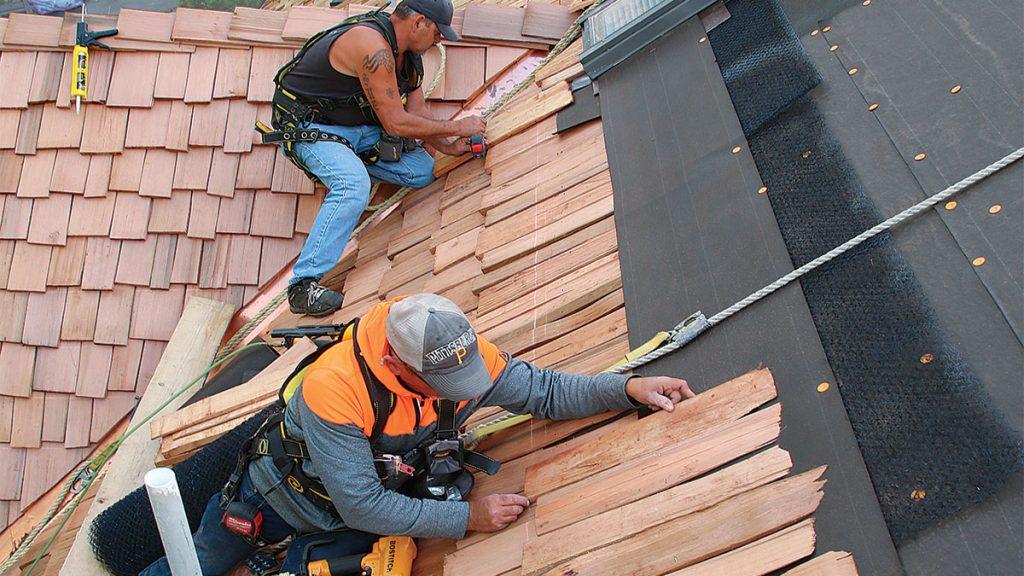Installing a cedar shake roof can add natural beauty and rustic charm to your home while providing durable protection against the elements. Cedar shakes are known for their longevity and resistance to decay, making them a popular choice for homeowners seeking a distinctive roofing solution. In this article, we will provide a comprehensive step-by-step guide on how to install a cedar shake roof, ensuring a successful and visually appealing roofing project.

Preparing for Cedar Shake Roof Installation:
Before you begin the installation process, there are several important steps to take to ensure a smooth and successful project:
- Roof Inspection: Conduct a thorough inspection of your roof’s structure to identify any existing issues that need to be addressed before installing cedar shakes.
- Acquiring Materials: Purchase high-quality cedar shakes from a reputable supplier. Ensure that the shakes are properly treated and graded to resist moisture and decay.
- Safety Precautions: Prioritize safety by using appropriate personal protective equipment (PPE) and securing the work area to prevent accidents.
Step-by-Step Guide to Cedar Shake Roof Installation:
1. Removing Old Roofing: Begin by removing any existing roofing materials, such as shingles or old shakes, down to the roof deck.
2. Preparing the Roof Deck: Ensure the roof deck is clean, dry, and free from debris. Make any necessary repairs to the deck before proceeding.
3. Installing Underlayment: Lay down a high-quality underlayment to provide an additional layer of protection against moisture and improve the roof’s overall performance.
4. Starter Course: Begin at the eaves with a starter course of cedar shakes. Use corrosion-resistant nails to secure the shakes to the roof deck.
5. Shingle Placement: Place the cedar shakes in overlapping rows, ensuring that each shake overlaps the one below it. Fasten the shakes with nails, avoiding overdriving to prevent damage.
6. Nailing Pattern: Follow the manufacturer’s recommended nailing pattern to ensure proper attachment and prevent wind uplift.
7. Ridge and Hip Installation: Install cedar shakes on roof ridges and hips using specially designed ridge and hip shakes.
8. Flashing and Ventilation: Install flashing around roof penetrations and in valleys to prevent water infiltration. Ensure proper ventilation to prevent moisture buildup.
9. Finishing Touches: Trim any excess shakes along the edges of the roof and apply a protective finish or stain to enhance the cedar’s durability and appearance.
10. Inspecting and Maintenance: After installation, thoroughly inspect the roof for any loose shakes or issues. Regular maintenance, including cleaning and re-staining, will help prolong the life of your cedar shake roof.
Conclusion:
Installing a cedar shake roof requires careful planning, attention to detail, and a commitment to quality workmanship. By following this step-by-step guide and taking the necessary precautions, you can achieve a stunning and durable cedar shake roof that enhances your home’s curb appeal and provides long-lasting protection. Remember to prioritize safety, use the right materials, and consult with roofing professionals if needed to ensure a successful installation that you can enjoy for years to come.



Leave a Reply